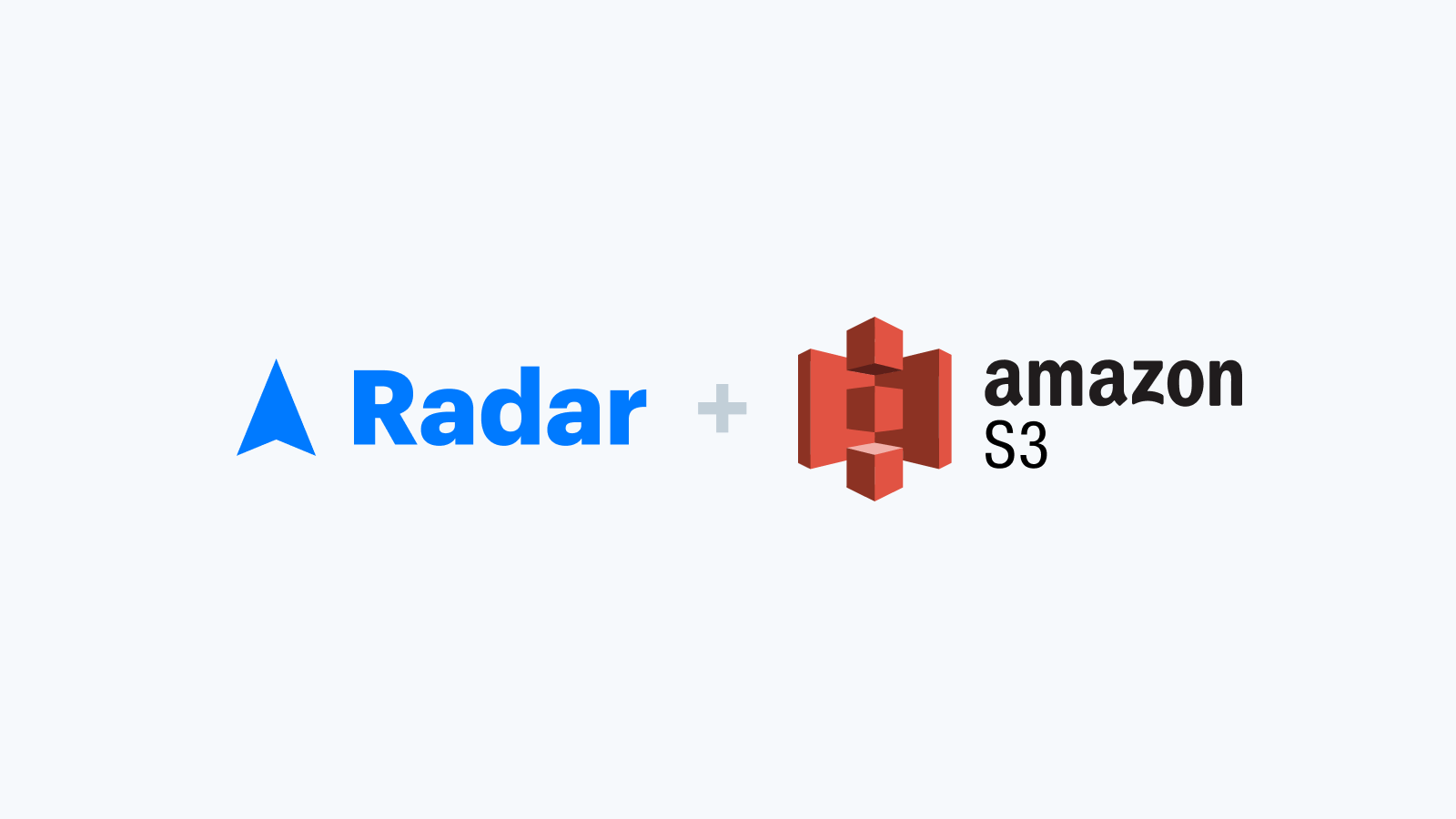Harnessing location analytics for decision making with Radar and Amazon S3
Radar is now integrated with Amazon S3 to make getting insights from location data even easier for data scientists and analysts. Two of the hardest problems teams face in data analysis are data consistency and data access. Radar’s integration with S3 reduces this data wrangling process by providing access to well-defined Radar Location and Event objects in your own S3 bucket that’s readily available to your team. With direct integration, you don’t have to pull any data manually or write additional code that listens to webhooks.

How this integration works
With the new integration, data transfer from Radar to S3 happens automatically and securely. The Amazon S3 integration uses an AWS Kinesis Data Firehose to stream new Radar Locations and Events in real-time. Locations made available in S3 come from Radar’s track API calls. With this data, you can have a complete view of all the individual location updates Radar processes.
Events in Radar can come from a number of sources: Geofences, Places, Regions, Trips, and Beacons. For example, when a user enters a geofence, like a retail store or restaurant, you can trigger an event in Radar which you can then analyze downstream to better understand foot traffic. Similarly, if you’re using Radar for Trips, you can understand the time spent on trips in total or the time spent waiting at an individual location.
With all of your Location and Event data, you can perform analysis on your Radar data in isolation or by joining it with other data that you may already have available in AWS. By having data in S3, it should be easy to incorporate your Radar data with your data lakes or data warehouse with few additional steps. Even if you aren’t an S3 customer currently, setting up S3 is straightforward and affordable, with a GB of storage costing just a few pennies per month so any additional costs are low.
What this integration can mean for your industry
Leading restaurants, digital payment platforms, retail brands, logistics companies, and travel and entertainment companies use location intelligence from Radar to better understand consumer behavior and opportunities for efficiency improvements. Radar's geofences create a virtual perimeter around specific locations for traffic data, location history, competitive campaigns, and mapping consumer behaviors.
The integration between Radar and Amazon S3 makes it easier to get data for downstream analytics reviews, powering important reports related to investments, ROI reporting, and more.Businesses from a range of industries can take advantage of location-based insights:
Restaurant, grocery, and retail brands can capture footfall data – information about how many people are entering a store at certain times – to analyze consumer shopping patterns and interactions with location-aware experiences like in-store mobile app offers. Brands with brick-and-mortar locations might also want to measure in-store dwell times, distance traveled for pickup orders, or curbside wait times broken out by store or region. Brick & mortar brands can also gather and analyze competitive data using Radar’s Places technology by tracking entry events into competitive locations, and use this as an opportunity to send targeted win-back campaigns.
Digital payment providers can use location to identify fraud risks and prevent money laundering by analyzing consumers' physical location when making a transaction. They also use location to determine which stores are most likely to accept payments and identify new merchant partners based on consumer behavior.
Travel and entertainment companies are able to leverage mobile device location to create personalized recommendations and itineraries based on user preferences and historical activity. They can also use this data to power marketing campaigns to invite guests back for future trips and measure the success of these campaigns in real-time.
Logistics companies can use location services to improve fleet management and optimize delivery routes and supply chains. For example, they can track shipments to see if they are being delivered to the correct address and send alerts when deliveries need to be made to specific locations.
Privacy and user consent
Both Radar and Amazon S3 are GDPR compliant and committed to protecting data through industry-leading security standards. Data is only collected by Radar when users opt in and is stored safely within AWS.
How to take advantage of this new integration
Radar customers that are currently using Amazon S3 can request to have the integration added to their account by speaking to a Radar Customer Success Manager. If you’re not a current customer and you’re interested in making data-driven decisions with precise location analytics from Radar, speak with a member of our team to learn more.